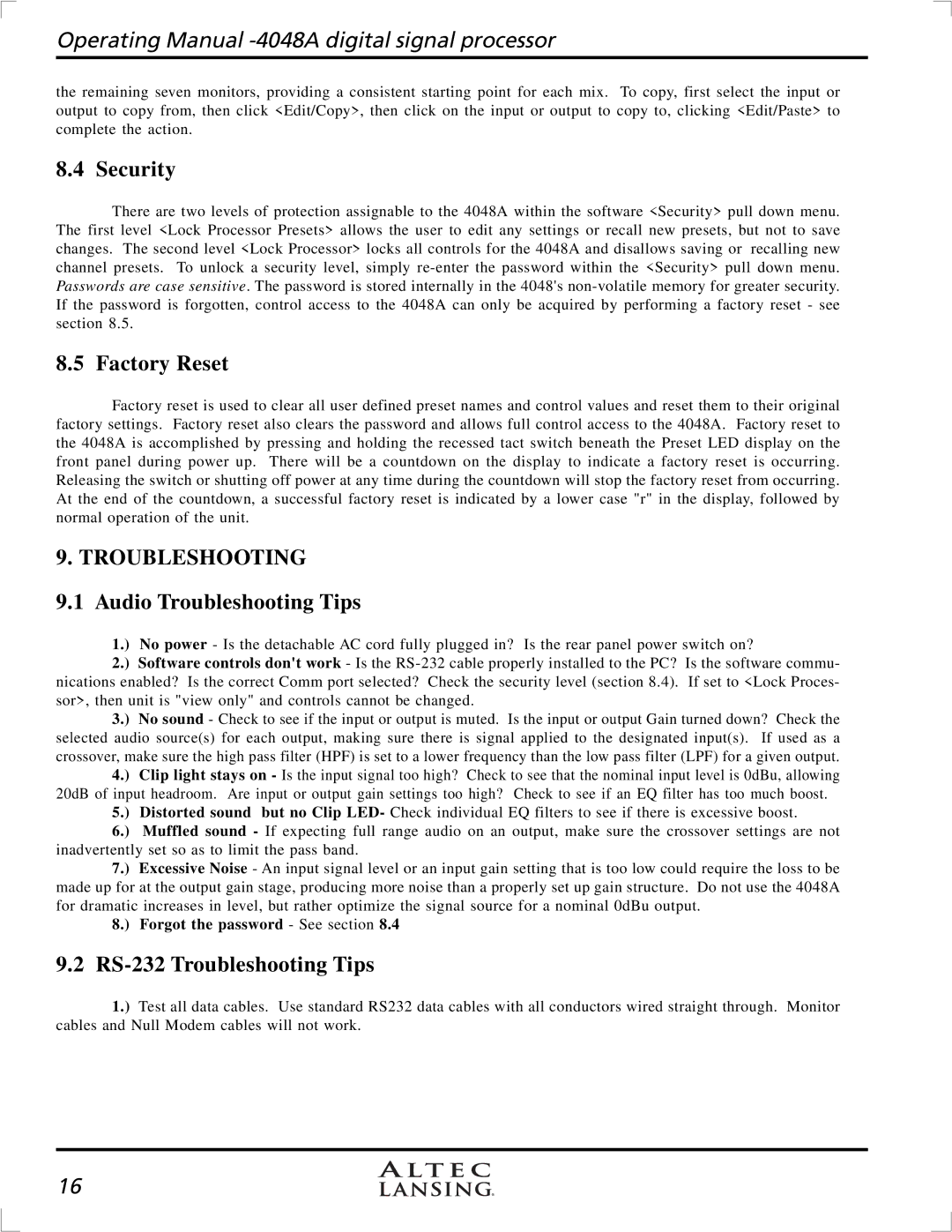
Operating Manual
the remaining seven monitors, providing a consistent starting point for each mix. To copy, first select the input or output to copy from, then click <Edit/Copy>, then click on the input or output to copy to, clicking <Edit/Paste> to complete the action.
8.4 Security
There are two levels of protection assignable to the 4048A within the software <Security> pull down menu. The first level <Lock Processor Presets> allows the user to edit any settings or recall new presets, but not to save changes. The second level <Lock Processor> locks all controls for the 4048A and disallows saving or recalling new channel presets. To unlock a security level, simply
8.5 Factory Reset
Factory reset is used to clear all user defined preset names and control values and reset them to their original factory settings. Factory reset also clears the password and allows full control access to the 4048A. Factory reset to the 4048A is accomplished by pressing and holding the recessed tact switch beneath the Preset LED display on the front panel during power up. There will be a countdown on the display to indicate a factory reset is occurring. Releasing the switch or shutting off power at any time during the countdown will stop the factory reset from occurring. At the end of the countdown, a successful factory reset is indicated by a lower case "r" in the display, followed by normal operation of the unit.
9. TROUBLESHOOTING
9.1 Audio Troubleshooting Tips
1.) No power - Is the detachable AC cord fully plugged in? Is the rear panel power switch on?
2.) Software controls don't work - Is the
3.) No sound - Check to see if the input or output is muted. Is the input or output Gain turned down? Check the selected audio source(s) for each output, making sure there is signal applied to the designated input(s). If used as a crossover, make sure the high pass filter (HPF) is set to a lower frequency than the low pass filter (LPF) for a given output.
4.) Clip light stays on - Is the input signal too high? Check to see that the nominal input level is 0dBu, allowing 20dB of input headroom. Are input or output gain settings too high? Check to see if an EQ filter has too much boost.
5.) Distorted sound but no Clip LED- Check individual EQ filters to see if there is excessive boost.
6.) Muffled sound - If expecting full range audio on an output, make sure the crossover settings are not inadvertently set so as to limit the pass band.
7.) Excessive Noise - An input signal level or an input gain setting that is too low could require the loss to be made up for at the output gain stage, producing more noise than a properly set up gain structure. Do not use the 4048A for dramatic increases in level, but rather optimize the signal source for a nominal 0dBu output.
8.) Forgot the password - See section 8.4
9.2 RS-232 Troubleshooting Tips
1.) Test all data cables. Use standard RS232 data cables with all conductors wired straight through. Monitor cables and Null Modem cables will not work.
16
